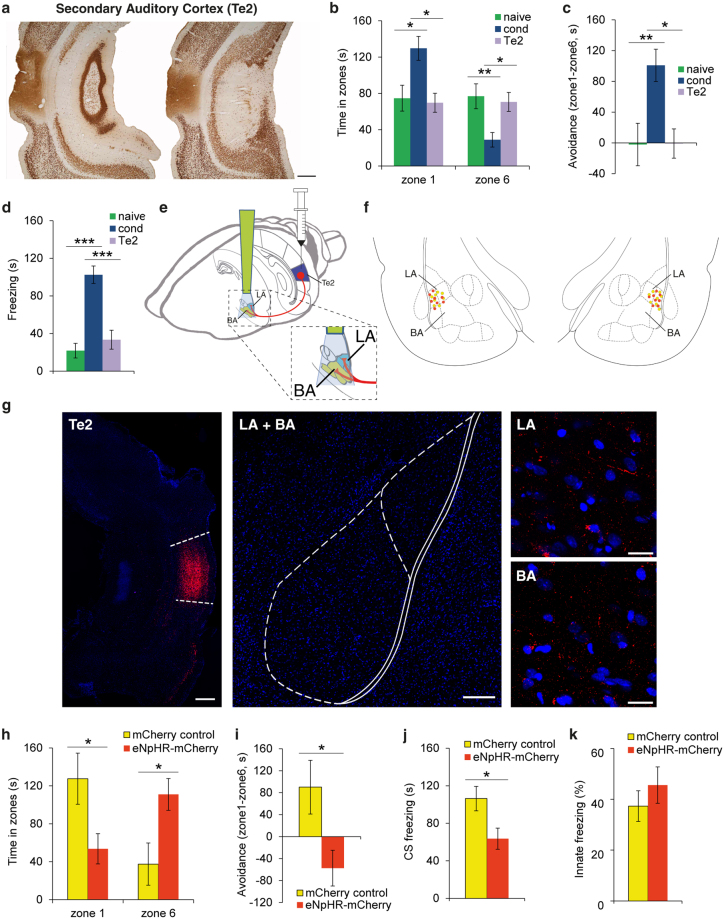Figure 5.
The higher-order Te2 cortex provides essential information to LA and BA during auditory memory retrieval. (a) Lesions were centered in the secondary auditory cortex Te2 (n = 9). Scale bar, 500 μm. (b) A mixed-design ANOVA indicated a significant main effect of the zone (F(1,34) = 5.36, P = 0.027), significant main effects of the group in zone 1 (F(2,34) = 6.48, P = 0.004) and zone 6 (F(2,34) = 6.27, P = 0.005). Pairwise comparisons showed significant differences between Te2-lesioned and conditioned animals in zones 1 (P = 0.015) and 6 (P = 0.044). Indeed, the distribution of the time spent in zones 1 and 6 was similar in Te2-lesioned and naive animals (P > 0.05). (c) Avoidance behavior was weaker (F(2,34) = 6.68, P = 0.004) in Te2-lesioned animals relative to conditioned rats (P = 0.020). (d) The freezing responses of Te2-lesioned rats were similar to naive animals (F(2,34) = 25.6, P < 0.001; naive versus Te2-lesioned animals, P > 0.05; Te2-lesioned versus conditioned rats, P < 0.001). (e) The Te2 region of the rats was injected with rAAV5/CamKIIa-eNpHR3.0-mCherry-WPRE. (f) Bilateral placement of optic fiber tips within the LA and BA. Orange dots represent eNpHR-mCherry-injected animals, while yellow dots represent mCherry control animals. (g) Representative micrographs showing the expression of eNpHR3.0-mCherry (in red) in Te2 and its terminals in either LA and BA. Nuclei were counterstained with DAPI. Scale bars, 300, 200, 20, 20 μm respectively. (h) eNpHR-mCherry-injected animals (n = 8) spent significantly less time in zone 1 and significantly more time in zone 6 than mCherry controls (n = 8). (i, j) Animals injected with eNpHR-mCherry exhibited significantly lower (i) avoidance and (j) freezing than mCherry controls. (k) There were no differences in the freezing response to the presentation of an innate threat stimulus. *P < 0.05; **P < 0.01; ***P < 0.005. All values are reported as the mean ± SEM. See also Supplementary Fig. S4.

